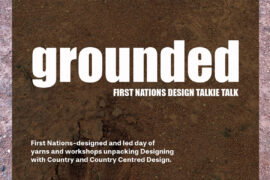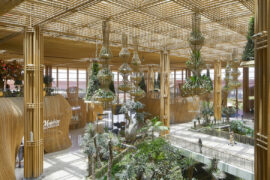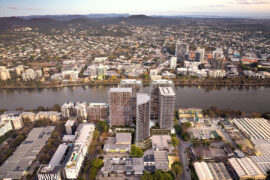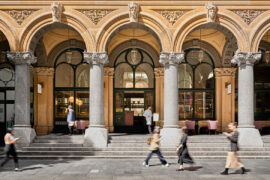Taylor & Hinds Architects designed krakani lumi, a standing camp in Mount William National Park, that helps to tell the significant story of country and the creation.
Krakani lumi, a standing camp in Mount William National Park, Tasmania, provides accommodation for a four-day 30-kilometre cultural walk developed by the Aboriginal Land Council of Tasmania (ALCT).
Poppy Taylor and Mat Hinds of Taylor & Hinds Architects designed krakani lumi, working in close collaboration with the ALCT to achieve the outcomes of the project.
“This project represents a great deal to the Tasmanian Aboriginal community. It is part of a much larger story of the cultural landscape and this area holds a very important place in that story,” says Mat.
“It also questions what kinds of approaches to architecture can be made when there is such a significant cultural message that must be told, and when that message is so inextricably linked to country.”
The standing camp provides accommodation and communal facilities for two guides, an elder and ten walkers. It incorporates a single long pavilion and six individual twin-share huts. The communal pavilion has a domed interior at one end that opens to a circular fire pit; produce store, kitchen and dining area in the middle; and guide accommodation and ablutions at the other end.
An elevated boardwalk extends from the pavilion to the huts sited among groves of melaleuca and banksia. The huts have a boxy exterior and domed interior with bronze mesh screens across openings and solid timber shutters and doors.
The half-domed forms are influenced by traditional shelters once made in the area. Clad in charred Silvertop Ash the closed buildings are like shadows among the vegetation, yet the blackwood-lined interiors almost glow with light and fire.
“Once the interiors are opened, the spaces of krakani Lumi establish a very different, more extroverted, relationship with the site,” says Mat. “The moment of waking to morning light and the frenzied activity of honeyeaters feeding, is heightened by the sense of immediacy that the interior creates.”
AJR Construct prefabricated the hut frames, which were helicoptered into small footings so that no trees were removed or cut during construction. Cladding, joinery and finishing was then completed on site. “This process delivered the best outcome for the site, requiring the least amount of intervention and reducing the impact on the ground,” Mat explains.
The camp is off-grid and can be locked and left. Rainwater is collected from the pavilion roof, a solar array generates power with a diesel generator serving as backup, hot water is provided by instantaneous gas water-heaters, and refrigeration and cooking are by gas, with wood for the fire pit.
Storytelling and an oral tradition are central to aboriginal culture, providing a valued means of remembering and conveying experience and history. Wukalina Walk opened in January 2018 and it is an opportunity for the aboriginal community to tell visitors their stories, experiences and history of the area and Tasmania’s first people.
“The telling of country and the creation is unique to this area, so guests are left with an overwhelming sense of having experienced something extraordinarily real.”
INDESIGN is on instagram
Follow @indesignlive
A searchable and comprehensive guide for specifying leading products and their suppliers
Keep up to date with the latest and greatest from our industry BFF's!

Welcomed to the Australian design scene in 2024, Kokuyo is set to redefine collaboration, bringing its unique blend of colour and function to individuals and corporations, designed to be used Any Way!

Several design groups are coming together on 29th October, 2025 for ‘grounded,’ a day of talks and workshops on Country-centred design.

Discover the range designed to let people gather and ideas flow

Winner of the INDE.Awards 2025 Best of the Best, Terminal 2 Kempegowda International Airport Interiors by Enter Projects Asia and SOM showcases 12,000-square-metres of biophilic design, featuring nine kilometres of handwoven rattan in a sustainable, world-class passenger experience.
The internet never sleeps! Here's the stuff you might have missed

Plus Studio and ICD Property have submitted a proposal for a development on Brisbane’s Donkin Street, using a 1.68-hectare former industrial site as a new riverside residential and community destination.

Luchetti Krelle’s timeless design at Epula marries heritage grandeur with classic sophistication, celebrating the spirit of a European piazza whilst remaining unmistakably of its place.